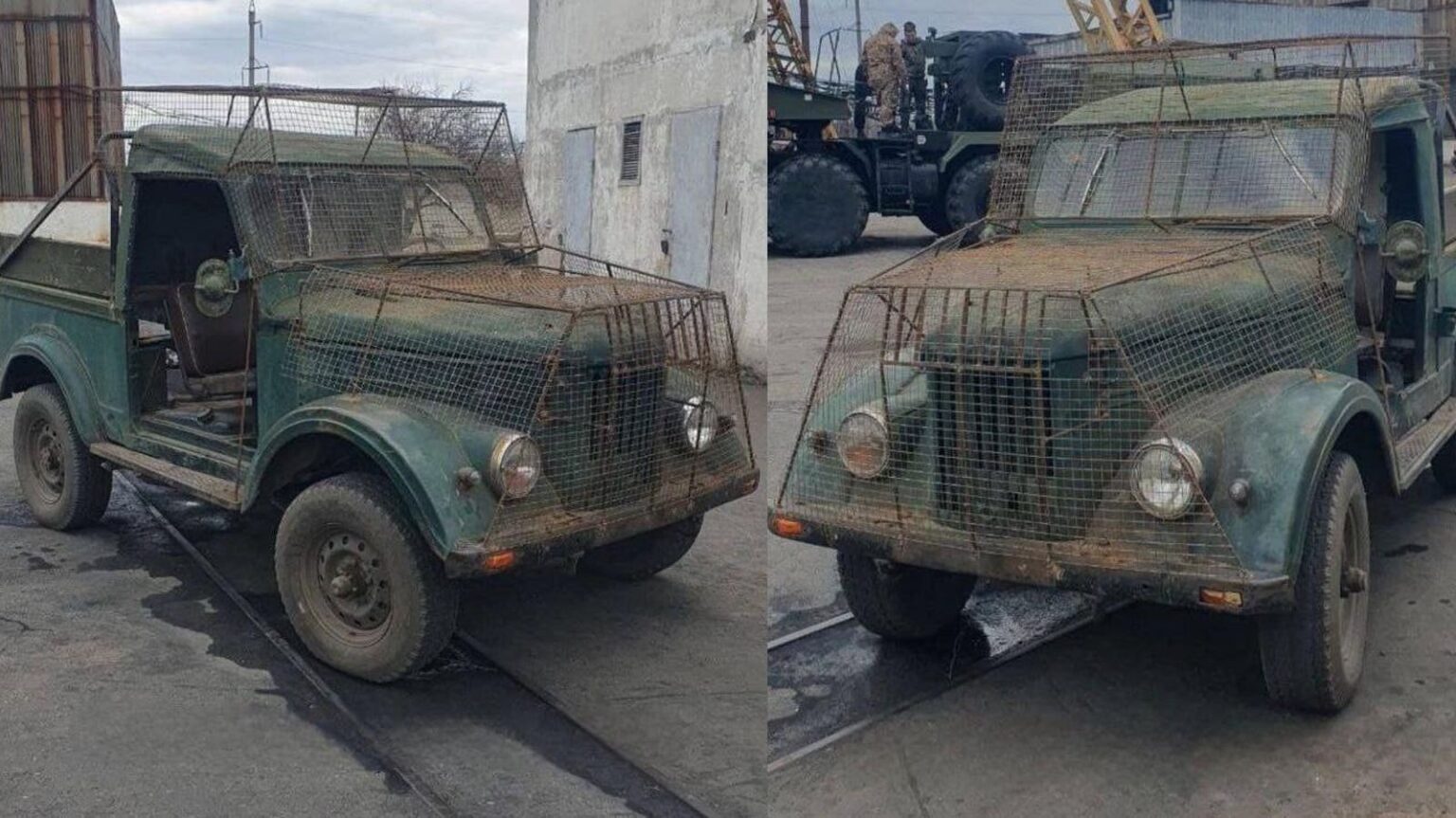An up-armored GAZ-69.
Via Special Kherson Cat
The GAZ-69 was one of the earliest Soviet off-road vehicles. The first example of the 3,500-pound, four-wheel-drive truck rolled off the assembly line at the Molotov plant in Moscow in 1952. The last was completed in 1972.
Developed in the late 1940s, the GAZ-69 is—generously speaking—an 80-year-old design. It’s also one of the latest vehicle types to roll into battle with the Russian army in Ukraine. Recent photos have depicted GAZ-69s near the front line of Russia’s 37-month wider war on Ukraine. At least one deployed GAZ-69 has been fitted with anti-drone screens.
The arrival of the aged off-road vehicles is the latest evidence of the Russian military’s accelerating de-mechanization as losses of purpose-made armored vehicles and other heavy equipment exceed 20,000. To put into perspective how many vehicles there are, the entire British military operates around 18,000 vehicles.
Losing far more armored vehicles than they can replace through new production or by retrieving older vehicles from long-term storage, the Russians increasingly depend on civilian vehicles not just for battlefield logistics—but also for direct assaults on Ukrainian positions.
“I guess this Lada storming is the norm now?” open-source analyst Moklasen mused as they scrutinized yet another video feed from a Ukrainian drone unit blowing up Russian Lada compact cars attacking Ukrainian positions in late January.
Vehicular death spiral
But civilian vehicles are even more vulnerable to mines, artillery, drones and missiles than armored vehicles. Up-armored trucks and civilian vehicles such as vans, trucks, compact cars and all-terrain vehicles—that is, golf carts—now account for around 70 percent of Russian losses, according to one recent survey.
In switching to civilian transport, Russian regiments risk accelerating their de-mechanization as the civilian vehicles get destroyed even faster than the increasingly precious armored vehicles, resulting in greater demand for even less suitable modes of transportation, such as electric scooters and even horses and donkeys. The only other alternative, of course, is for Russian troops to walk into battle.
The de-mechanization of the Russian military doesn’t mean Russia can’t sustain an offensive and incrementally advance in Ukraine. The Russian armed forces still have more people and, incredibly, more vehicles than the Ukrainians—and they’re willing to expend them for modest territorial gains.
But the loss of militarily appropriate vehicles does constrain Russian forces. De-mechanized Russian regiments might overwhelm and push back Ukrainian brigades under certain circumstances. But realistically, these hollowed-out regiments can’t exploit the resulting gaps in Ukrainian defenses.
Read the full article here


